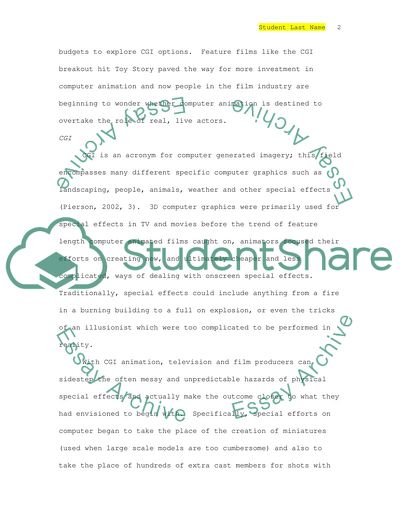Cite this document
(The Future of CGI and Physical Actors Case Study, n.d.)
The Future of CGI and Physical Actors Case Study. Retrieved from https://studentshare.org/visual-arts-film-studies/1544033-with-todays-advances-in-the-use-of-cgi-and-digital-imagery-will-the-human-actor-eventually-become-obsolete
The Future of CGI and Physical Actors Case Study. Retrieved from https://studentshare.org/visual-arts-film-studies/1544033-with-todays-advances-in-the-use-of-cgi-and-digital-imagery-will-the-human-actor-eventually-become-obsolete
(The Future of CGI and Physical Actors Case Study)
The Future of CGI and Physical Actors Case Study. https://studentshare.org/visual-arts-film-studies/1544033-with-todays-advances-in-the-use-of-cgi-and-digital-imagery-will-the-human-actor-eventually-become-obsolete.
The Future of CGI and Physical Actors Case Study. https://studentshare.org/visual-arts-film-studies/1544033-with-todays-advances-in-the-use-of-cgi-and-digital-imagery-will-the-human-actor-eventually-become-obsolete.
“The Future of CGI and Physical Actors Case Study”, n.d. https://studentshare.org/visual-arts-film-studies/1544033-with-todays-advances-in-the-use-of-cgi-and-digital-imagery-will-the-human-actor-eventually-become-obsolete.


